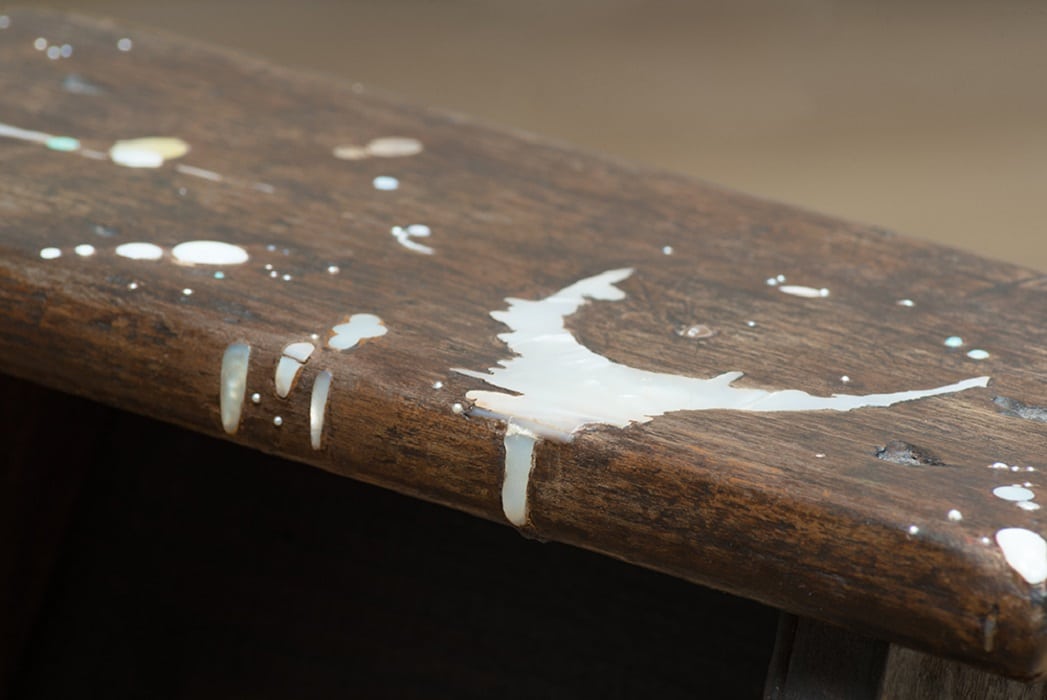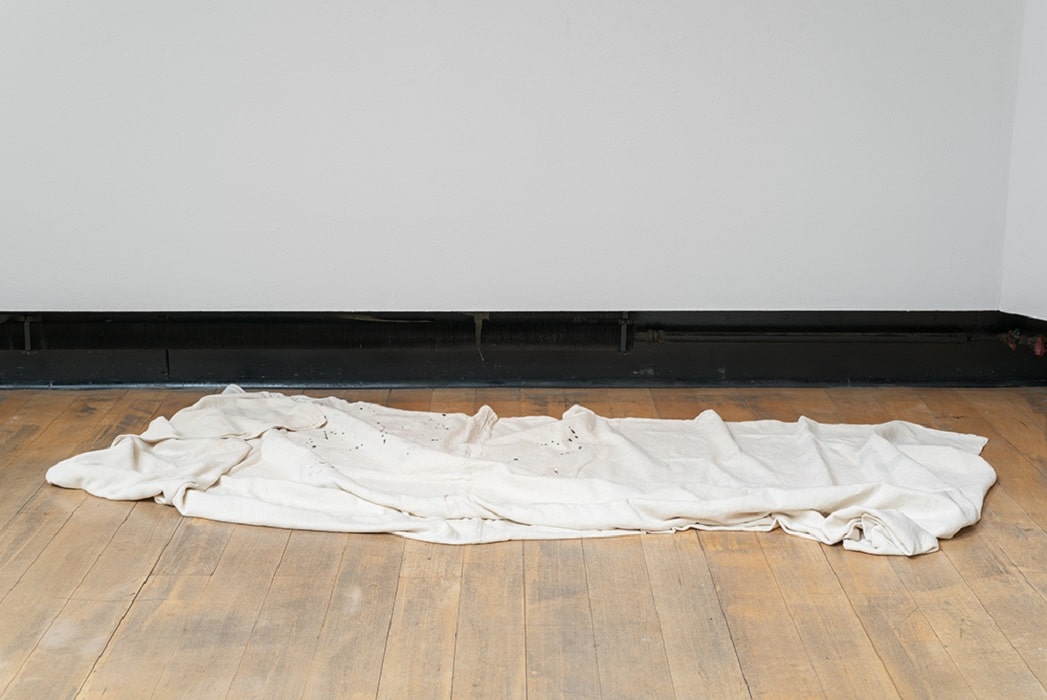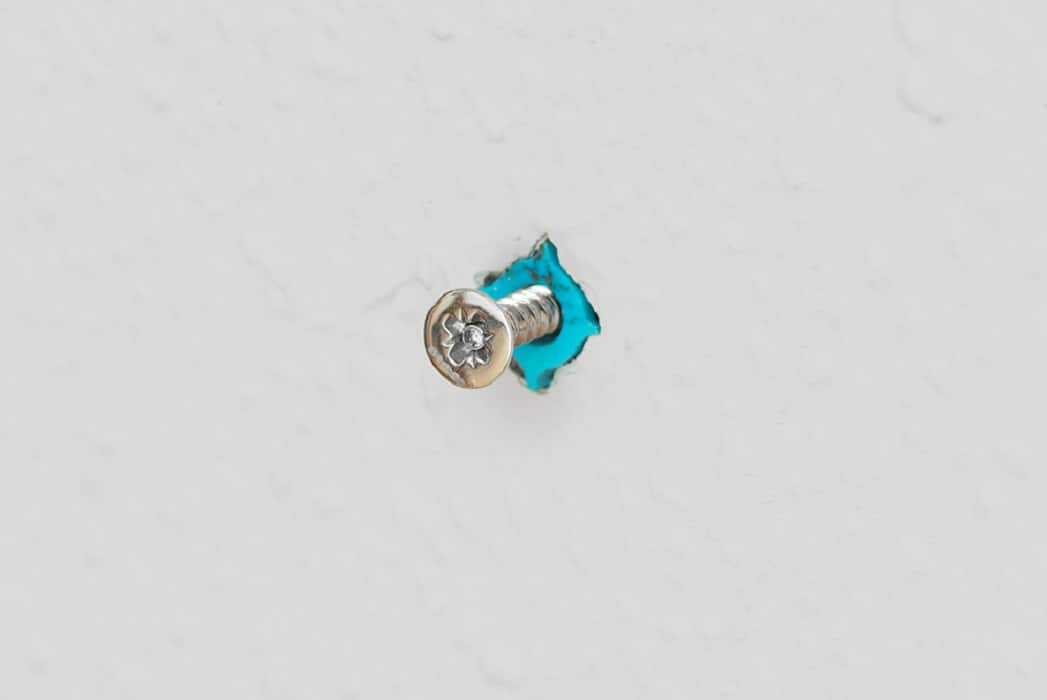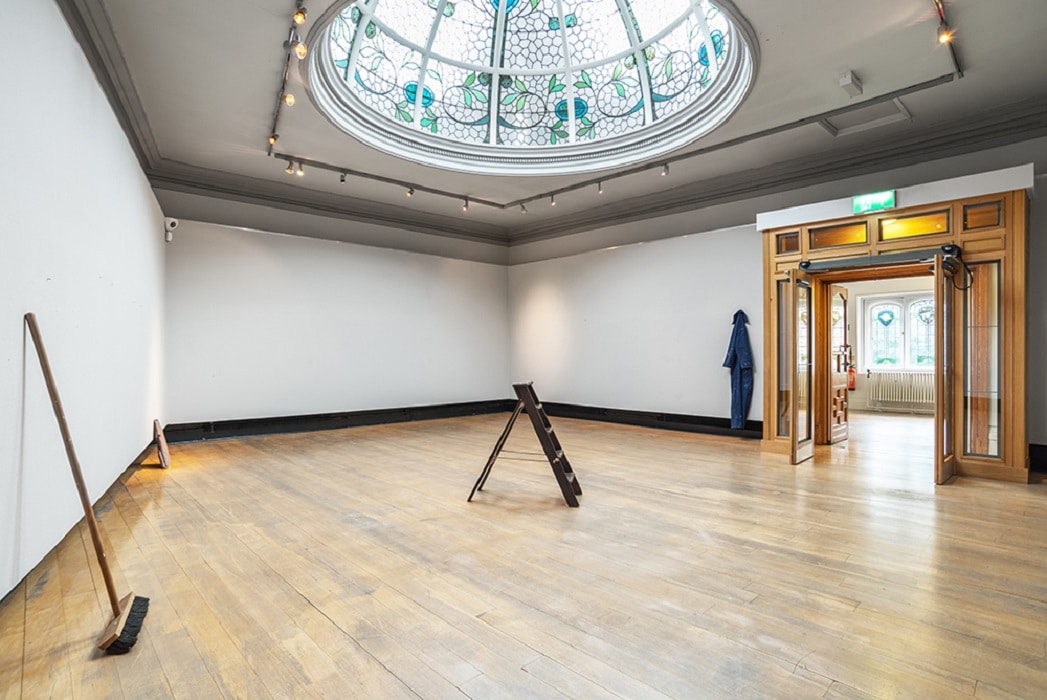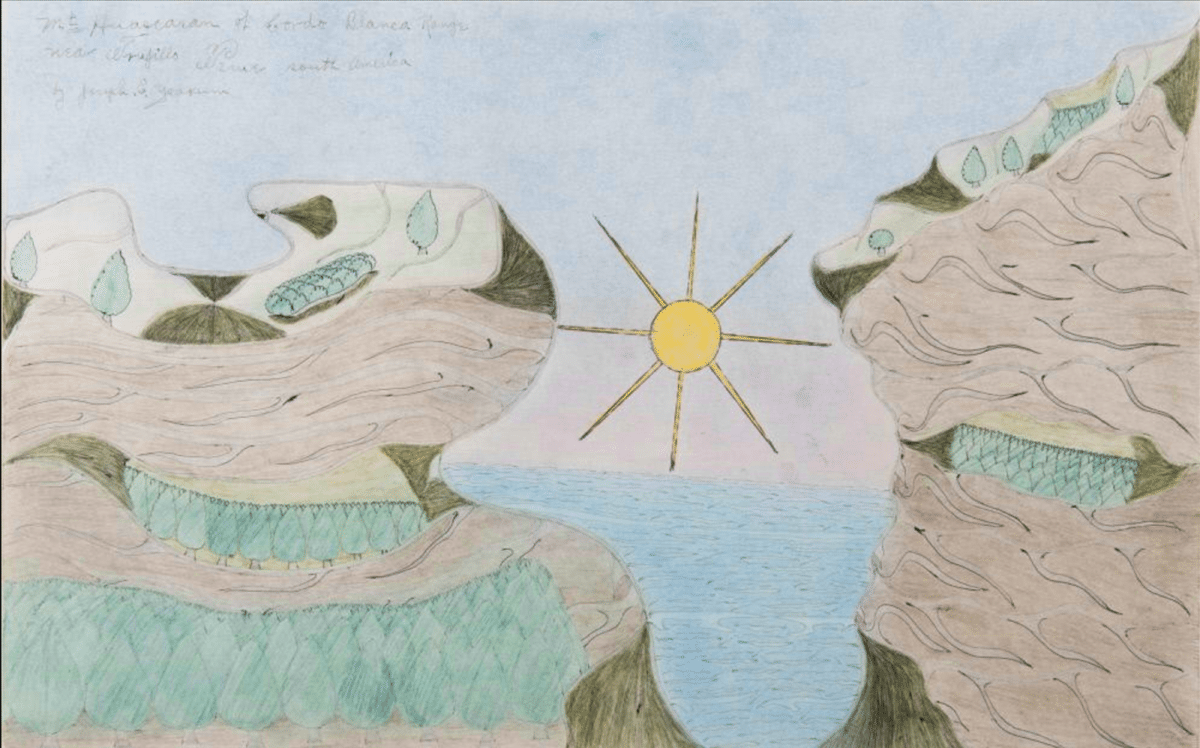Past Exhibition
Susan Collis: Without You The World Goes On
Susan Collis: Without you the world goes on is the artist’s first museum exhibition in the United States.
A rickety old stepladder accompanied by a drop cloth, both spattered with drips of paint, sits nearby.
When entering into an exhibition featuring Susan Collis’ artwork, one might think they arrived on the wrong day — there appears to be no art and it looks like the installation crew has stepped out for a break.
Visitors with an eye for detail, however, will pause. Upon closer inspection, they’ll discover that the paint drips on the ladder are not paint but precious gems — opals, pearls, coral, and turquoise — meticulously inlaid in the wood.
Likewise, the paint drips on the drop cloth are beautifully hand-stitched silk embroidery. Further inspection yields more surprises: nails and screws are made from platinum and white gold; packing blankets are handwoven with mohair, cashmere, and gold thread; and scraps of what appear to be ordinary wooden boards are instead exotic and rare white holly or rosewood. Discovering the installation supplies are actually the works of art, and realizing these seemingly ordinary objects have been made from or altered with precious materials, gives a jolt of excitement — as if let in on a secret.
Susan Collis: Without you the world goes on is organized by Director of Curatorial Affairs / Senior Curator Alison Ferris. A full color, hardcover exhibition catalogue will accompany the exhibition including an interview between the artist and Ferris, as well as an essay by curator, writer, and art historian Glenn Adamson.

Video
The Shape of Craft
This lecture by Ezra Shales, author of the recent book The Shape of Craft, will offer compelling ideas that seek to expand thought around the commonly accepted definition of craft.
Selected Works from Susan Collis: Without you the world goes on
Collis’s works are about time, materials, labor, and value. They are replete with conceptual ideas and full of rich, poetic, intrinsic contradictions. For instance, she questions why expensive materials employed to make a work of art determine its value — by using valuable materials to make her own work. She complicates the assumption that the time invested in making a work of art impacts the object’s value — while investing a considerable amount of her own labor to create objects that may easily go unnoticed. Her work questions the structures and methods of its own production, as well as viewers’ assumptions about artistic production and display.

